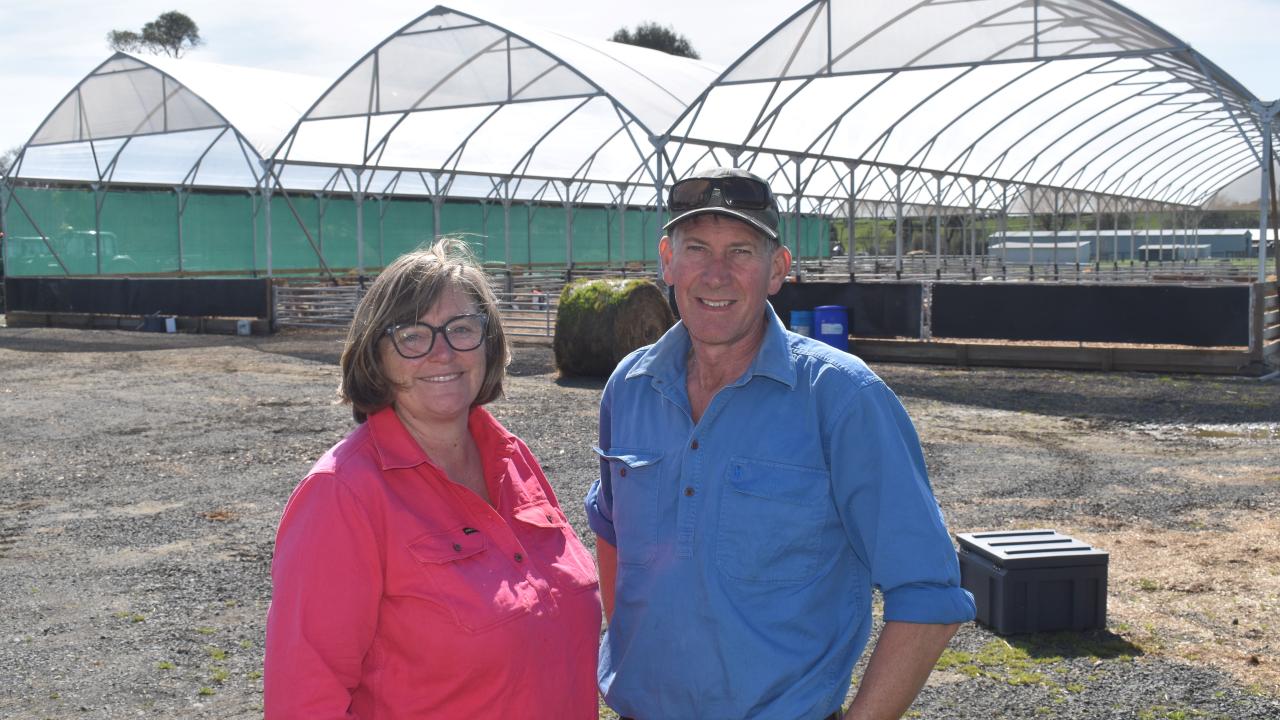Clear benefits in calf shelters

INVESTING in new infrastructure has helped one Tasmanian dairying family combat a problem they have been battling for years.
Like many dairy producers, Ken and Jill Lawrence have had to deal with regular rotavirus infections in their calves, a problem exacerbated by using the same calving paddocks year after year.
To help deal with the issue, they built a new clear-roofed calf-rearing facility in 2023.
The shelter, from Dairy Shelters Australia, has delivered a number of benefits and the Lawrences are now planning to add more next year to give their Jersey cows a warmer and drier place to calve.
They farm on the Fermer property near Westbury, which has been in the Lawrence family since 1936 and has always been home to a Jersey herd.
Three of the Lawrences’ five children now also work in the dairy operation.
The farm is on the edge of the high rainfall area, usually getting about 800mm of rain a year.
They have 210ha under irrigation with three centre pivots, covering nearly half of the 487ha farm that is supported by two runoff blocks for dry cows and for providing feed.
They milk between 850 and 900 cows that produce an average 6000 litres of milk with 5.3 per cent fat and 3.9 per cent protein.
Their relatively high stocking rate and constant re-use of the calving paddocks prompted them to look at options for a calf shed.
Mr Lawrence said the ultimate aim of the first shelter built in 2023 was to combat the rotavirus and reduce calf sickness.
“The cows have been calving in the same paddocks for many years and you get a build-up of bugs so we wanted to change that,” he said.
“We have a fairly high stocking rate, especially for the calving paddocks, and if it’s a wet calving season, the paddocks just turn to mud.”
The virus usually kicks in three weeks into calving but this year it remained absent until after a major storm in September.
“We’ve had to deal with rotavirus over the past few years, but because it’s warmer in the shelter they don’t get secondary conditions or pneumonia and they are in a confined area so it’s easier to give them electrolytes,” Mrs Lawrence said.
“We are very particular about raising calves and they have grown bigger as they don’t have to keep themselves warm.
“They coped a lot better than if they had been out in the elements with the smaller shelters we previously used.”
There has been a 7 per cent weight increase in 14-monthold yearling heifers raised in the shelters compared to the previous year.


Add new comment